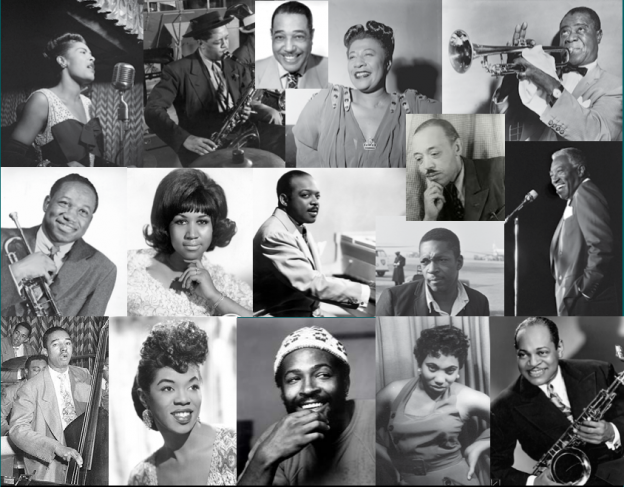February is the annual celebration of the lives, work, and influence of Black Americans to U.S. history and culture. This Black History Month we celebrate Black musicians whose groundbreaking music helped change the world of music.
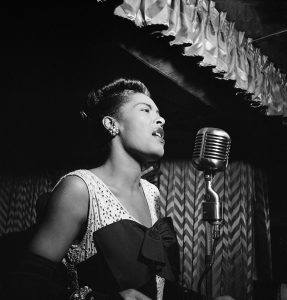
Public Domain, photo by William P. Gottlieb, Feb.1947
Billie Holiday
Billie Holiday is considered one of the best jazz vocalists of all time, Holiday had a thriving career as a jazz singer for many years before she lost her battle with substance abuse. Also known as Lady Day, her autobiography was made into the 1972 film “Lady Sings the Blues.” In 2000, Holiday was inducted into the Rock and Roll Hall of Fame. – Biography.com
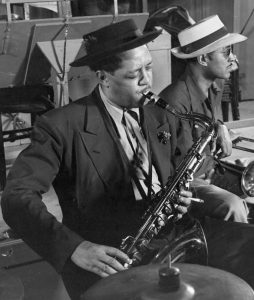
Public Domain, photo by LIFE Magazine, 1944
Lester Young
Lester Willis Young, aka “Prez,” was a famous jazz saxophonist born in Woodville, Mississippi on August 27, 1909. Young eventually settled in Kansas City in 1933, where he began performing with a number of small time bands. It was here that he met Count Basie, who was a prominent jazz composer and bandleader. Young became a full time member of Basie’s orchestra and fit in well with their relaxed style of playing. He temporarily left the band to join Fletcher Henderson’s orchestra and then the Andy Kirk band, before rejoining Basie’s band. One of his last and most memorable performances was with Billie Holiday, among others, in a televised performance for CBS in 1957. – FamousAfricanAmericans.org
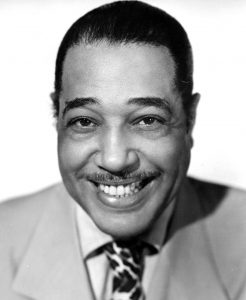
Public Domain, circa 1940s
Duke Ellington
An originator of big-band jazz, Duke Ellington was an American composer, pianist and bandleader who composed thousands of scores over his 50-year career. A major figure in the history of jazz music, Duke Ellington’s career spanned more than half a century, during which time he composed thousands of songs for the stage, screen and contemporary songbook. He created one of the most distinctive ensemble sounds in Western music and continued to play what he called “American Music” until shortly before his death in 1974. – Biography.com
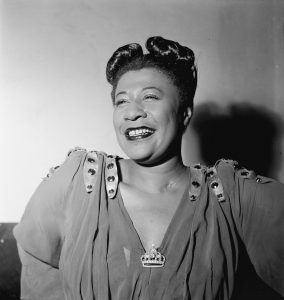
Public Domain, photo by William P. Gottlieb
Ella Fitzgerald
Ella Fitzgerald, known as the “First Lady of Song” and “Lady Ella,” was an immensely popular American jazz and song vocalist who interpreted much of the Great American Songbook. She turned to singing after a troubled childhood and debuted at the Apollo Theater in 1934. Discovered in an amateur contest, she went on to become the top female jazz singer for decades. In 1958, Fitzgerald made history as the first African American woman to win a Grammy Award. Due in no small part to her vocal quality, with lucid intonation and a broad range, the singer would go on to win 13 Grammys in total and sell more than 40 million albums. Her multi-volume “songbooks” on Verve Records are among America’s recording treasures. – Biography.com
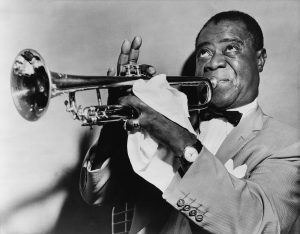
Public Domain, U.S. Library of Congress
Louis Armstrong
Louis Armstrong, nicknamed “Satchmo,” “Pops” and, later, “Ambassador Satch,” was a native of New Orleans, Louisiana. An all-star virtuoso, he came to prominence in the 1920s, influencing countless musicians with both his daring trumpet style and unique vocals. Armstrong’s charismatic stage presence impressed not only the jazz world but all of popular music. He recorded several songs throughout his career, including he is known for songs like “Star Dust,” “La Vie En Rose” and “What a Wonderful World.” One of the most important figures in 20th century music, Armstrong’s innovations as a trumpeter and vocalist are widely recognized today, and will continue to be for decades to come. – Biography.com
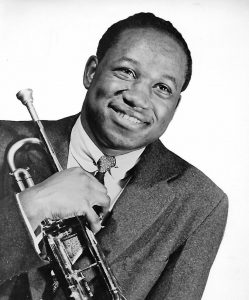
Public Domain by The News Journal, 1956
Clifford Brown
Clifford Brown was one of the 20th century’s greatest trumpet players. He represented the highest level of instrumental excellence and influenced a generation of jazz musicians. Dizzy Gillespie called him “the next major voice in the line of trumpeters.” As impressive and historically important as his musical accomplishments were, his personal impact on those who knew him is also quite extraordinary. His profound work ethic, personal integrity, kind-hearted nature, and commitment to excellence deeply affected his friends and fellow musicians. In the early morning hours of June 27, 1956, while driving to Chicago for an engagement at The Blue Note, Brown and another quintet member, pianist Richie Powell, and Powell’s wife Nancy, were killed in an auto accident on the Pennsylvania Turnpike. Clifford Brown was 25 years old. – PhiladelphiaMusicAlliance.org
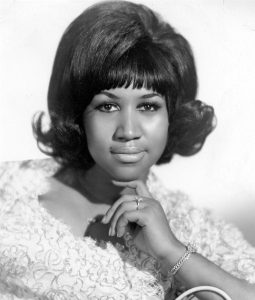
Public Domain, by Atlantic Records/Billboard, 1968
Aretha Franklin
Multiple Grammy winner and “Queen of Soul” Aretha Franklin was known for such hits as “Respect,” “Freeway of Love” and “I Say a Little Prayer.” A gifted singer and pianist, Franklin toured with her father’s traveling revival show and later visited New York, where she signed with Columbia Records. Franklin went on to release several popular singles, many of which are now considered classics. In 1987 she became the first female artist to be inducted into the Rock and Roll Hall of Fame, and in 2008 she won her 18th Grammy Award, making her one of the most honored artists in Grammy history. – Biography.com
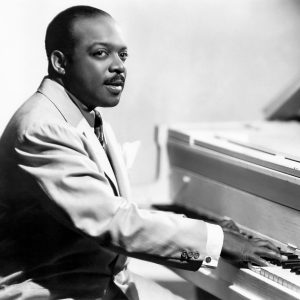
Public Domain , photo by James J. Kriegsman, 1955
Count Basie
One of jazz music’s all-time greats, bandleader-pianist Count Basie was a primary shaper of the big-band sound that characterized mid-20th century popular music. Basie played vaudeville before eventually forming his own big band and helping to define the era of swing with hits like “One O’Clock Jump” and “Blue Skies.” In 1958, Basie became the first African American male recipient of a Grammy Award. One of jazz music’s all-time greats, he won many other Grammys throughout his career and worked with a plethora of artists, including Joe Williams and Ella Fitzgerald. Basie suffered from health issues in his later years, and died from cancer in Hollywood, Florida, on April 26, 1984. He left the world an almost unparalleled legacy of musical greatness, having recorded or been affiliated with dozens upon dozens of albums during his lifetime. – Biography.com
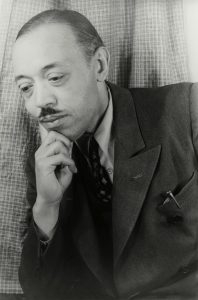
Public Domain, by Carl Van Vechten, 1949, U.S. Library of Congress
William Grant Still
William Grant Still, born May 11, 1895, Woodville, Mississippi, was an American composer and conductor and the first African American to conduct a professional symphony orchestra in the United States. Still’s concern with the position of African Americans in U.S. society is reflected in many of his works, notably the “Afro-American Symphony” (1931); the ballets “Sahdji” (1930), set in Africa and composed after extensive study of African music, and “Lenox Avenue” (1937); and the operas “The Troubled Island” (1938; produced 1949), with a libretto by Langston Hughes, and “Highway No. 1, U.S.A.” (produced 1963 and 1977). During this time, Still also made history when he conducted (1936) the Los Angeles Philharmonic. In 1939 he married, settling in Los Angeles. Still’s compositions from the mid-1930s show the jazz band as a major influence on his eclectic musical style. He made considerable use of material in the African American style—though rarely borrowing actual melodies—and preferred simple, commercial harmonies and orchestration, the use of which, however, was characterized by the highest professionalism and seriousness of purpose. Still died December 3, 1978, in Los Angeles, California. – Brittanica.com
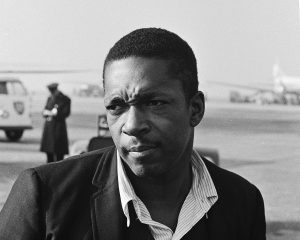
Public Domain/CCO 1.0, photo by Hugo van Gelderen, 1963
John Coltrane
John Coltrane was an acclaimed American saxophonist, bandleader and composer, becoming an iconic figure of jazz in the 20th century with albums like “Giant Steps,” “My Favorite Things” and “A Love Supreme.” During the 1940s and ’50s, Coltrane developed his craft as a saxophonist and composer, working with famed musicians/bandleaders Dizzy Gillespie, Duke Ellington and Miles Davis. Coltrane turned the jazz world on its head with technically marvelous, innovative playing that was thrillingly dense and fluid in its understanding of the genre; his virtuosity and vision could be heard on the now revered albums Giant Steps, My Favorite Things and A Love Supreme, among others. He died from liver cancer at 40 years old on July 17, 1967, in Huntington, Long Island, New York. – Biography.com
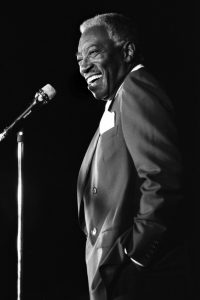
Photo by Brian McMillen, 1986 (CC BY-SA 4.0)
Joe Williams
Joe Williams, born Joseph Goreed on December 12, 1918, was an American singer known for his mastery of jazz, blues, and ballads and for his association with Count Basie in the 1950s. In 1937 he joined clarinetist Jimmie Noone’s band, which was broadcast nationally. Subsequently Williams worked with the big bands of Coleman Hawkins, Lionel Hampton, Andy Kirk, and Red Saunders; he made his recording debut in 1950. Williams’s breakthrough came when he joined the Count Basie Orchestra in 1954. His recording of “Every Day I Have the Blues” with Basie in 1955 made him famous and was a factor in the Basie band’s comeback. Staying with Basie until 1961, Williams also had hits with “Alright, Okay, You Win,” “Going to Chicago,” and “The Comeback.” The rich timbre of Williams’s baritone voice, his smooth delivery, his wit, and his style were widely appreciated by critics, audiences, and other performers. He died March 29, 1999, in Las Vegas, Nevada. – Brittanica.com
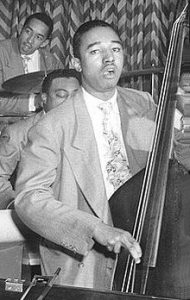
Photo by McOleo, circa 1947 (CC0)
Ray Brown
Ray Brown was an American string bassist and one of the greatest of all jazz virtuosos. Brown first made his mark at age 19 when he went to New York City to join Dizzy Gillespie’s band at a time when the modern jazz revolution, spearheaded by saxophonist Charlie Parker, was just getting under way. Brown began reaching wider audiences in the late 1940s when he started working with singer Ella Fitzgerald (the couple married in 1947 and divorced in 1952), and from 1951 to 1966 he was a member of the Oscar Peterson Trio, considered by many to be the finest small group in jazz history. Beginning in 1952 he was a frequent performer on Norman Granz’s popular Jazz at the Philharmonic concert tours. Brown’s playing was characterized by magnificent tonal resonance, extremely subtle grasp of harmony, and astonishing technique. After leaving Peterson’s trio in 1966, Brown settled in California, where he became a freelance and studio musician. He played on more than 2,000 recordings and worked with such musicians as Duke Ellington, Louis Armstrong, and Frank Sinatra. Brown continued to perform until his death in 2002. – Britannica.com
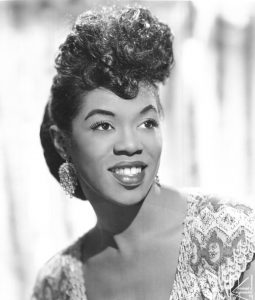
Public Domain, photo by James Kriegsmann, 1955
Sarah Vaughan
Sarah Vaughan, also known as “Sassy” and “the Divine One,” was an American jazz vocalist and pianist known for her rich voice, with an unusually wide range, and for the inventiveness and virtuosity of her improvisations. After winning an amateur contest at Harlem’s famed Apollo Theater in 1942, she was hired as a singer and second pianist by the Earl Hines Orchestra. A year later she joined the singer Billy Eckstine’s band, where she met Dizzy Gillespie and Charlie Parker. By the mid-1940s Vaughan began singing with John Kirby and appearing on television variety shows. During the 1950s her audience grew as she toured both the United States and Europe, and she signed with Mercury Record Corporation and EmArcy, Mercury’s jazz label, in 1953 to sing both pop and jazz. She also appeared in three movies in that period—”Jazz Festival” (1956), “Disc Jockey” (1951), and “Basin Street Revue” (1956). A contralto with a range of three octaves, she came to be regarded as one of the greatest of all jazz singers. Among her best-known songs were “It’s Magic,” “Make Yourself Comfortable,” “Broken-Hearted Melody,” “Misty,” and “Send in the Clowns.” Vaughan died in 1990, the same year in which she was inducted into the Jazz Hall of Fame. – Brittanica.com
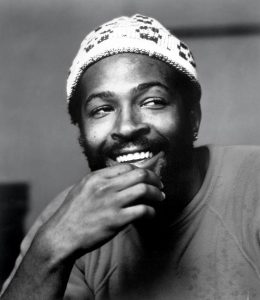
Public Domain, photo by Jim Britt, 1973
Marvin Gaye
Marvin Gaye was a soul singer-songwriter with Motown in the 1960s and 1970s. He produced his own records and often addressed controversial themes. He sang in his father’s church and in the Moonglows before signing with Motown. Throughout the 1960s, Gaye would show his immense range, churning out solo dance hits and romantic duets with hit-makers like Diana Ross and Mary Wells. For three high-flying years, Gaye and Tammi Terrell wowed the country with their soaring duet performances of songs like “Ain’t No Mountain High Enough” and “If I Could Build My Whole World Around You.” Gaye’s later records developed his production style and yielded several hits, including “Let’s Get It On,” “Sexual Healing” and “I Heard it Through the Grapevine.” In 1970, inspired by escalating violence and political unrest over the Vietnam War, Gaye wrote the landmark song “What’s Going On.” Gaye was killed in 1984 during a domestic dispute with his father. – Biography.com
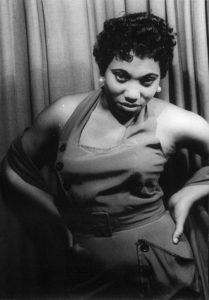
Public Domain, photo by Carl Van Vechten, 1953, U.S. Library of Congress
Leontyne Price
Soprano Leontyne Price is widely regarded as the first African American to gain international acclaim as a professional opera singer. Renowned for her early stage and television work, Price made her opera stage debut at the San Francisco Opera in 1957, and her debut at New York City’s Metropolitan Opera House in 1961. One of the first African American singers to earn international acclaim in the field, Price became known for her roles in “Il Trovatore,” “Antony and Cleopatra” and “Aida,” before retiring from the opera in 1985. Price continued to perform recitals for the next dozen years before retiring from the stage. She briefly came out of retirement in October 2001, to sing at a concert honoring victims of the September 11 terrorist attacks. Price has established an impressive legacy, achieving stardom as a woman of color during a time of segregation in America and in a profession where limited opportunities existed for someone with her background. – Biography.com
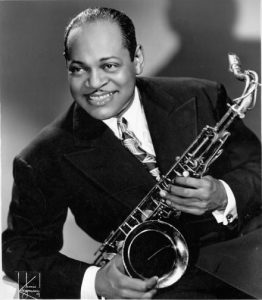
Public Domain, Billboard ad, 1945
Coleman Hawkins
Coleman Hawkins, in full Coleman Randolph Hawkins, born November 21, 1904, was an American jazz musician whose improvisational mastery of the tenor saxophone, which had previously been viewed as little more than a novelty, helped establish it as one of the most popular instruments in jazz. Hawkins was one of the first jazz horn players with a full understanding of intricate chord progressions, and he influenced many of the great saxophonists of the swing era (notably Ben Webster and Chu Berry) as well as such leading figures of modern jazz as Sonny Rollins and John Coltrane. From the 1940s on he led small groups, recording frequently and playing widely in the United States and Europe with Jazz at the Philharmonic and other tours. He willingly embraced the changes that occurred in jazz over the years, playing with Dizzy Gillespie and Max Roach in what were apparently the earliest bebop recordings (1944). In time he also became an outstanding blues improviser, with harsh low notes that revealed a new ferocity in his art. Despite alcoholism and ill health, he continued playing until shortly before his death in 1969. – Britannica.com

